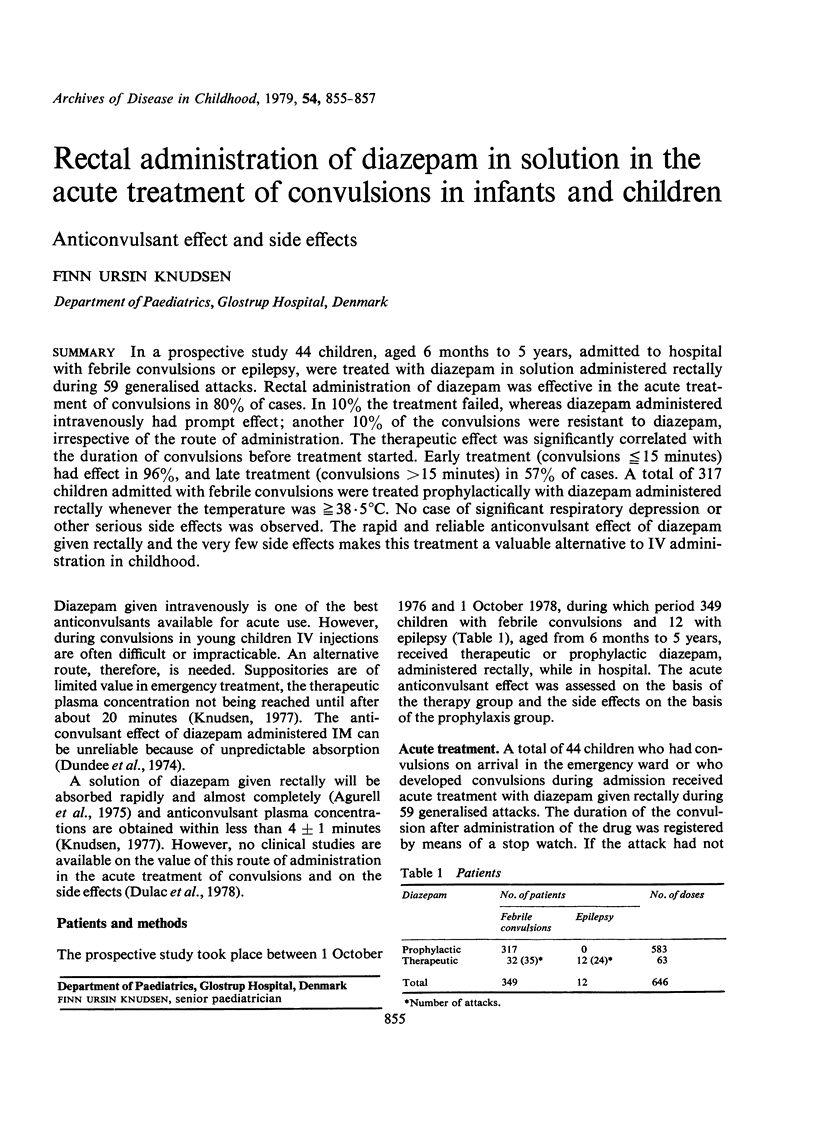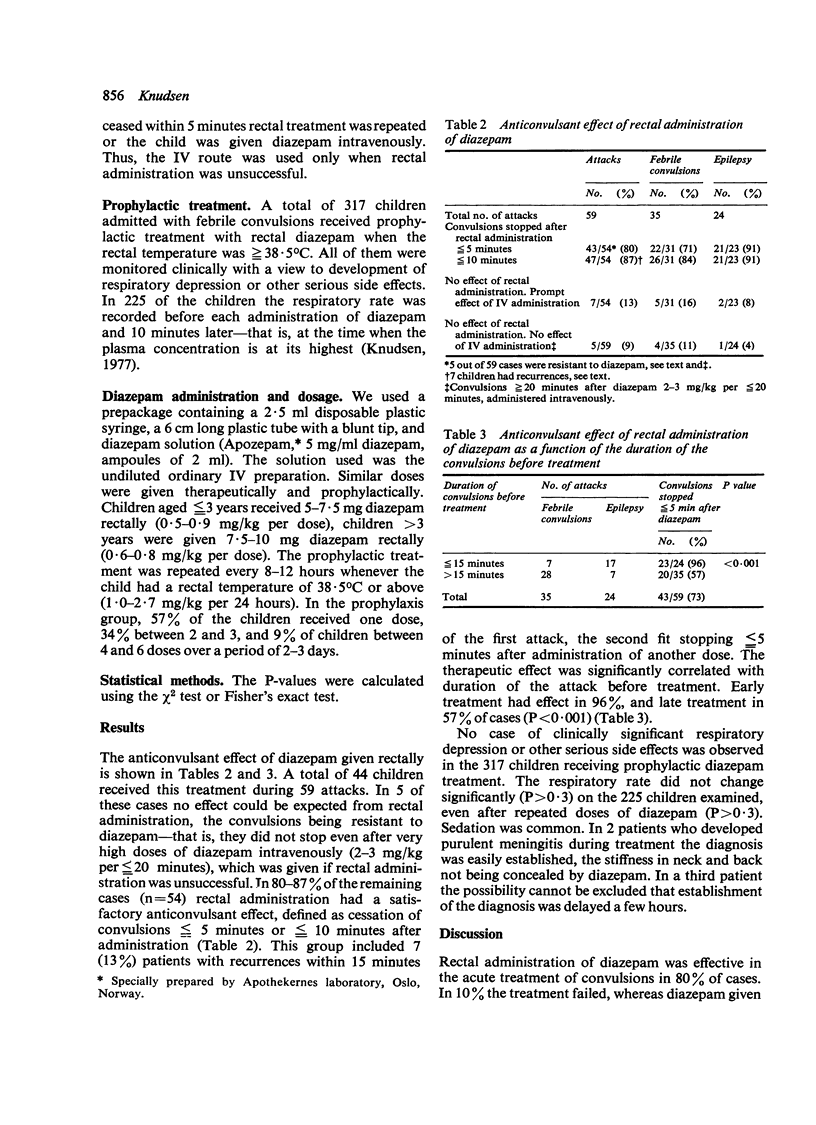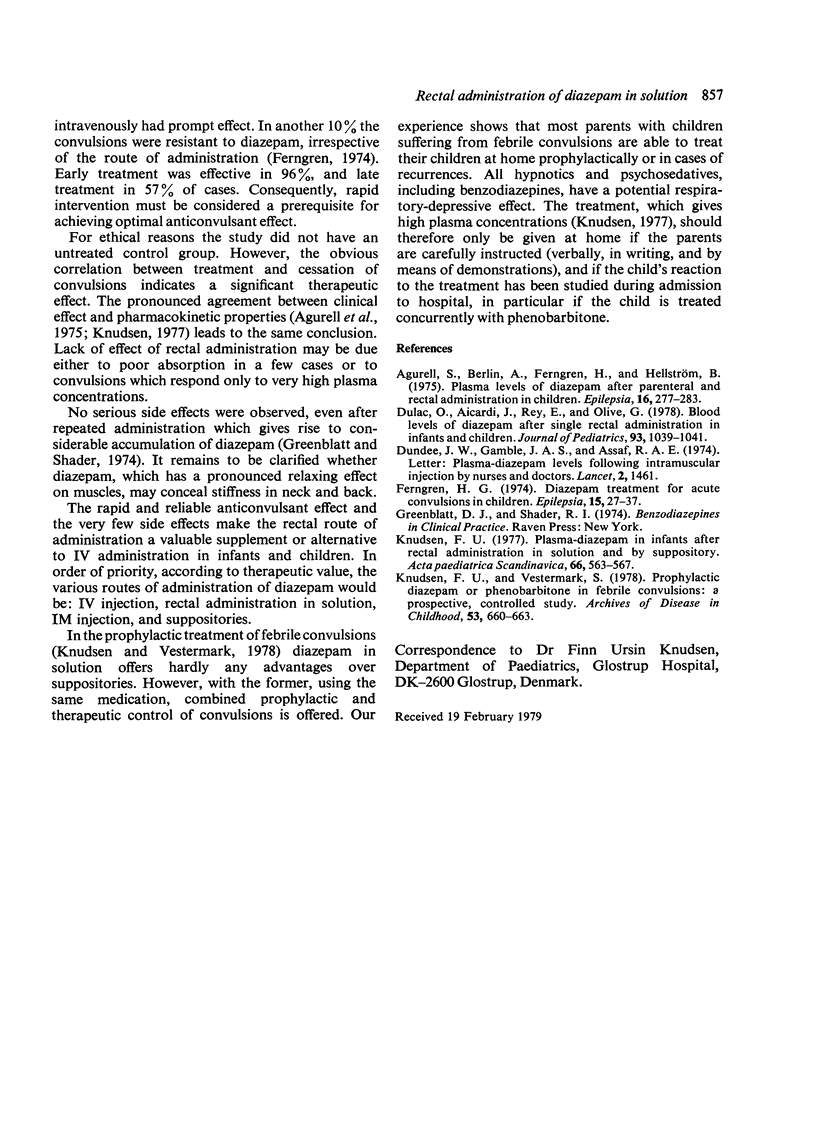Abstract
In a prospective study 44 children, aged 6 months to 5 years, admitted to hospital with febrile convulsions or epilepsy, were treated with diazepam in solution administered rectally during 59 generalised attacks. Rectal administration of diazepam was effective in the acute treatment of convulsions in 80% of cases. In 10% the treatment failed, whereas diazepam administered intravenously had prompt effect; another 10% of the convulsions wer resistant to diazepam, irrespective of the route of administration. The therapeutic effect was significantly correlated with the duration of convulsions before treatment started. Early treatment (convulsions less than or equal to 15 minutes) had effect in 96%, and late treatment (convulsions greater than 15 minutes) in 57% of cases. A total of 317 children admitted with febrile convulsions were treated prophylactically with diazepam administered rectally whenever the temperature was greater than or equal to 38.5 degrees C. No case of significant respiratory depression or other serious side effects was observed. The rapid and reliable anticonvulsant effect of diazepam given rectally and the very few side effects makes this treatment a valuable alternative to IV administration in childhood.
Full text
PDF


Selected References
These references are in PubMed. This may not be the complete list of references from this article.
- Agurell S., Berlin A., Ferngren H., Hellström B. Plasma levels of diazepam after parenteral and rectal administration in children. Epilepsia. 1975 Jun;16(2):277–283. doi: 10.1111/j.1528-1157.1975.tb06058.x. [DOI] [PubMed] [Google Scholar]
- Dulac O., Aicardi J., Rey E., Olive G. Blood levels of diazepam after single rectal administration in infants and children. J Pediatr. 1978 Dec;93(6):1039–1041. doi: 10.1016/s0022-3476(78)81254-2. [DOI] [PubMed] [Google Scholar]
- Dundee J. W., Gamble J. A., Assaf R. A. Letter: Plasma-diazepam levels following intramuscular injection by nurses and doctors. Lancet. 1974 Dec 14;2(7894):1461–1461. doi: 10.1016/s0140-6736(74)90130-5. [DOI] [PubMed] [Google Scholar]
- Ferngren H. G. Diazepam treatment for acute convulsions in children. A report of 41 patients, three with plasma levels. Epilepsia. 1974 Mar;15(1):27–37. doi: 10.1111/j.1528-1157.1974.tb03994.x. [DOI] [PubMed] [Google Scholar]
- Knudsen F. U. Plasma-diazepam in infants after rectal administration in solution and by suppository. Acta Paediatr Scand. 1977 Sep;66(5):563–567. doi: 10.1111/j.1651-2227.1977.tb07947.x. [DOI] [PubMed] [Google Scholar]
- Knudsen F. U., Vestermark S. Prophylactic diazepam or phenobarbitone in febrile convulsions: a prospective, controlled study. Arch Dis Child. 1978 Aug;53(8):660–663. doi: 10.1136/adc.53.8.660. [DOI] [PMC free article] [PubMed] [Google Scholar]


